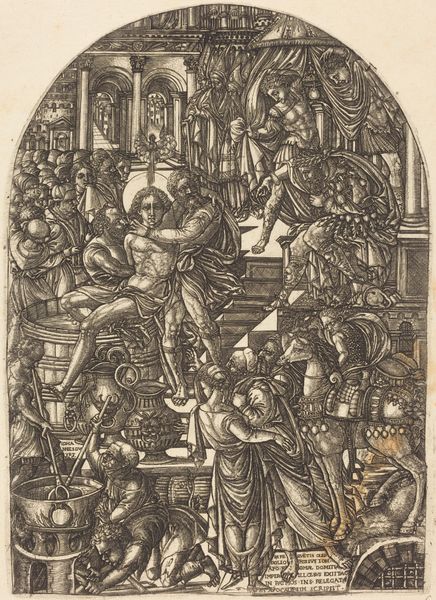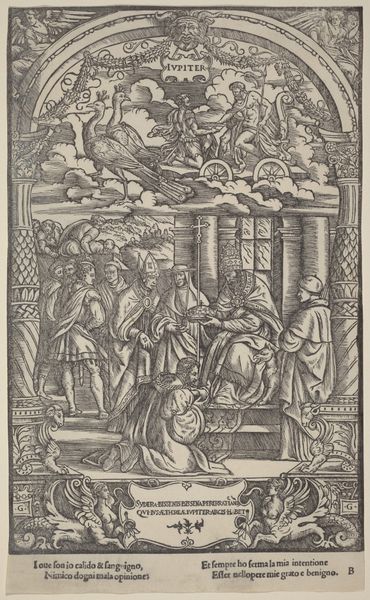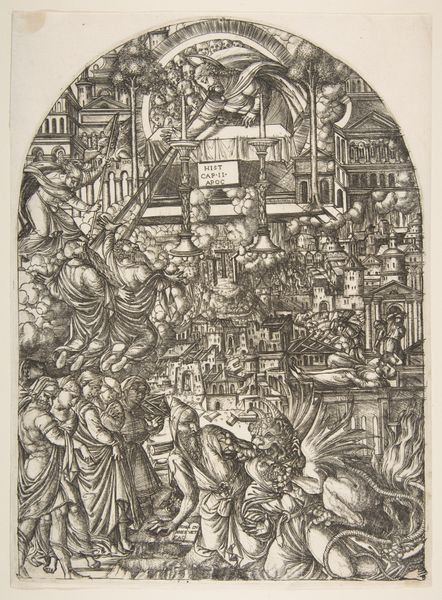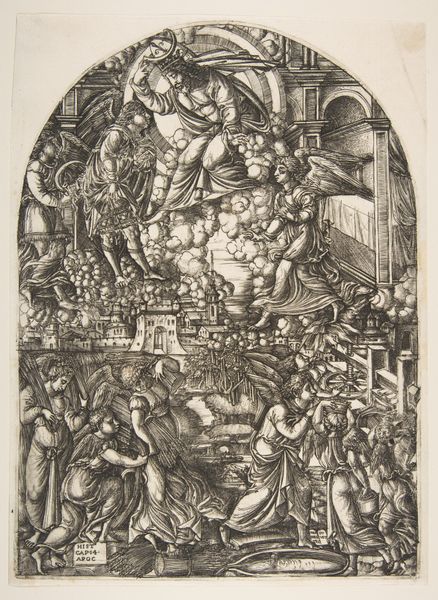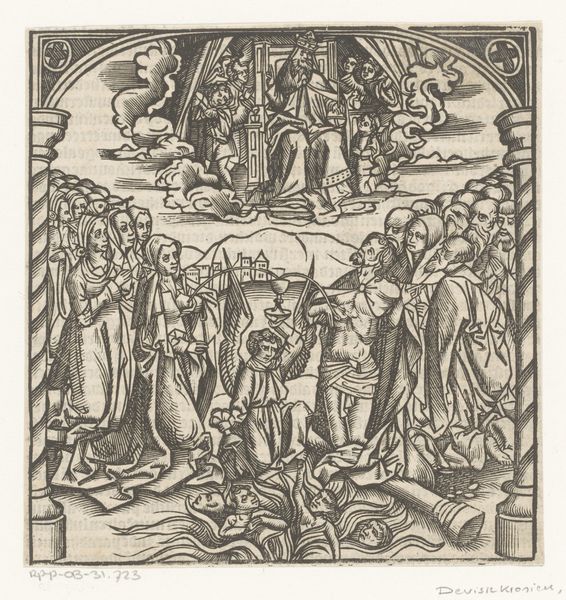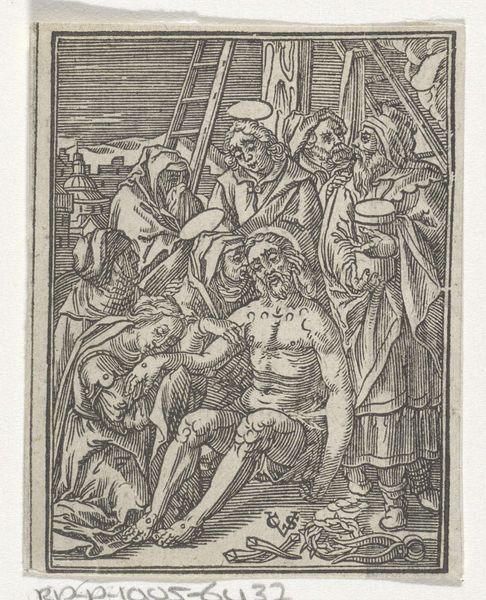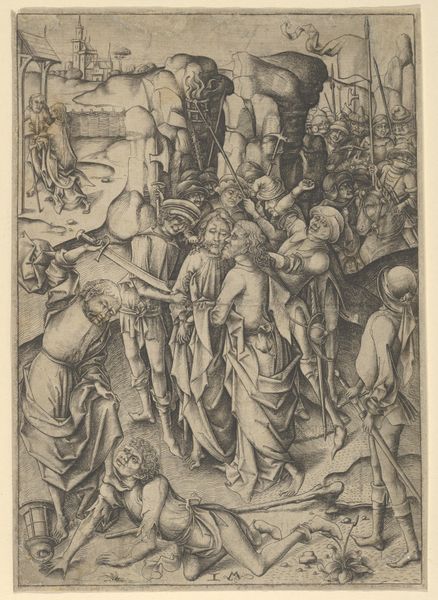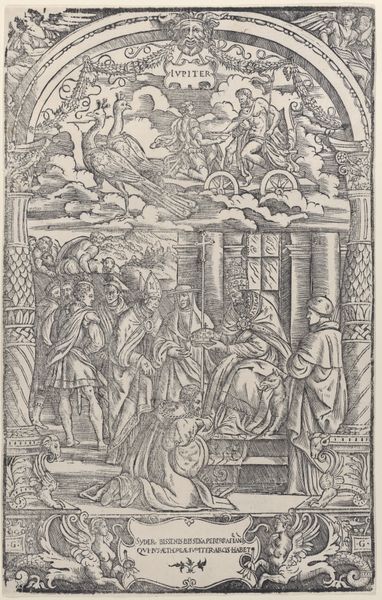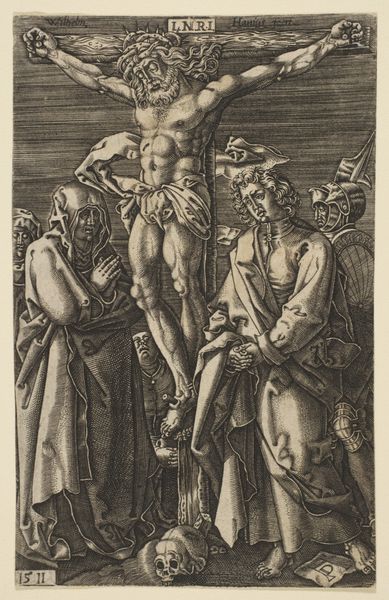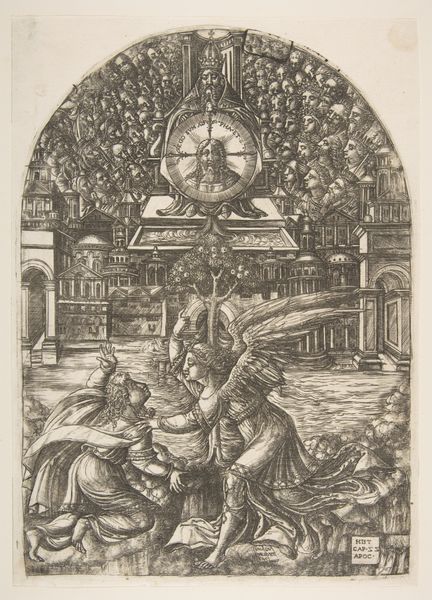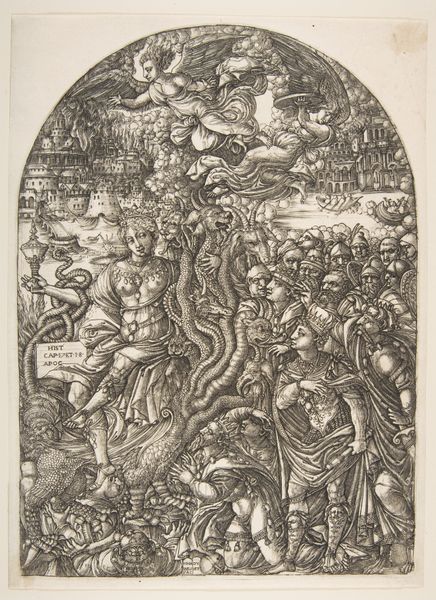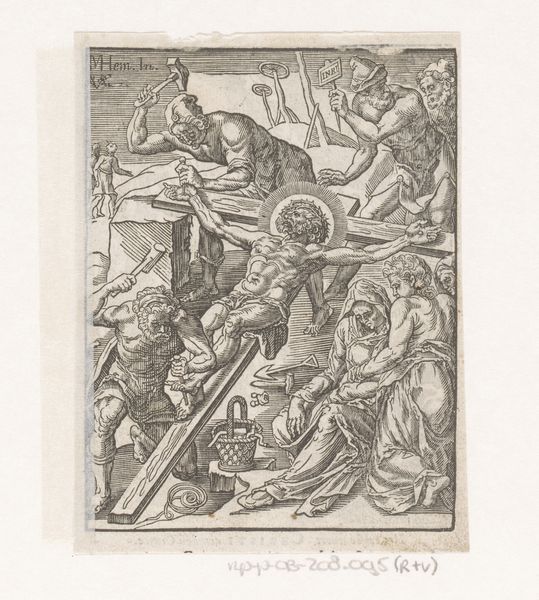
drawing, print, engraving
#
drawing
#
ink drawing
#
narrative-art
#
pen drawing
# print
#
figuration
#
crucifixion
#
history-painting
#
italian-renaissance
#
engraving
#
virgin-mary
Dimensions: sheet: 11 15/16 x 8 9/16 in. (30.4 x 21.7 cm)
Copyright: Public Domain
Curator: Today we are observing Jean Duvet's "The Deposition," a print made between 1480 and 1570 and held at the Metropolitan Museum of Art. Editor: It strikes me as a raw, almost frantic composition, a jumble of grief and bodies. You can almost feel the sharp lines cutting into the metal plate in an impatient frenzy. Curator: Indeed, the subject of Christ's removal from the cross resonates powerfully through its symbols of anguish and sacrifice. Notice how the artist depicts this sacred narrative with an almost dreamlike, distorted perspective. The architecture, figures, and even the cross feel emotionally, rather than realistically, rendered. Editor: The process of engraving adds another layer. Duvet had to physically carve this scene into a copperplate, using a burin to create these dense networks of lines. Imagine the time and effort required! And this wasn’t a unique artwork, but an image designed to be multiplied and circulated, a truly material expression. Curator: It becomes an object of devotion, available for repeated contemplation in homes, churches, and personal collections. I see clear parallels to earlier works depicting the Deposition and Pieta. There are familiar arrangements of figures intended to connect to collective grief, specifically Mary's sorrow over her lost son. Editor: Exactly! Think about how access to images transformed faith and personal experience. Suddenly, sacred stories were more accessible through cheap reproductions. And to create those reproductions meant labor, industry, distribution; this adds depth to our interpretation. Curator: That accessibility allowed artists to create personal interpretations. It carries a tremendous cultural weight as the scene is rife with potent theological metaphors related to love, death, and salvation. The ladder symbolizes access, as do the figures removing Christ's body from the cross as it is cradled for veneration. Editor: It’s powerful to consider that each impression is both a direct trace of Duvet’s hand and the product of broader networks of production and exchange, isn’t it? Curator: Indeed. The piece is a fascinating testament to both the personal expression of faith and its social context. Editor: Well, it truly changes how I reflect on the intersections of the economic and the devotional!
Comments
No comments
Be the first to comment and join the conversation on the ultimate creative platform.
